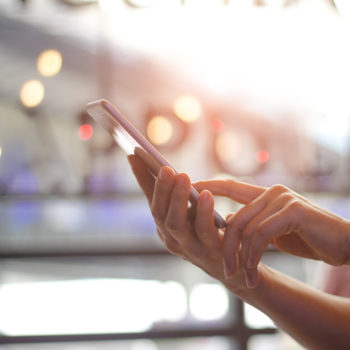It has long played a very important role in the fight against major diseases, but today technology is also becoming increasingly popular in the health care sector. In what way? The development of devices capable of collecting an impressive volume of medical data and biometric parameters, the so-called “big data”, represent a challenge and an opportunity in the field of early diagnosis as well as in that of medical research. Together with Dr. Andrea Carlo Lonati, an assistant to the Health Directorate of Humanitas, we talked about the cases of the Apple Heart Study and the software used in Milan during Expo 2015.
Big data, what resources?
Many experts theorize that big data may have been able to provide really interesting insights to support the fight against degenerative infectious and chronic diseases. If it is true that technology in these cases cannot provide a cure, this does not mean that it is not able to be of great help in early diagnosis or, even, in the prevention of the disease itself.
For infectious diseases, by extrapolating data from the Internet, it is possible both to analyze them and to process them in a format that allows them to be compared even at a geographical level, allowing us, for example, to understand how a disease is spreading or has spread or to obtain precise and concrete information, such as, for example, defining the place where to send the emergency teams. When properly structured and cross-referenced, data have the potential to isolate unexpected situations, identify information gaps and be an indispensable tool for health professionals.
In the early diagnosis and prevention of chronic degenerative diseases, the advent of wearable devices can provide interesting support even at a distance, as was the case with the Apple Heart Study.
Expo, an example of epidemiological intelligence
The 2015 World Expo gave the Lombardy Region the opportunity to test an advanced system of epidemiological intelligence through a program called “Medical Information System”. Thanks to this fully automatic surveillance platform, it has been possible to monitor infectious diseases and biological agents that have impacted on public health within a phenomenon such as Expo, which has earned the nickname of “mass gathering” for the volumes of people who attended it.
The system used, crossed and produced big data from different information sources, allowing the implementation of control strategies.
The Ebola case and other uses in Africa
In the case of Ebola, big data played an important role. By adding up and comparing infection data with mortality rates, the Qlik company, through a special application, provided the possibility to view the numbers of deaths in each region, comparing them with the number of people infected and determining the trend of spread. By adding data on medical interventions, it was also possible to assess the effectiveness of prevention measures and the extent to which they had held back the levels of infection.
Another case in which big data have done their part is the one in which researchers have been using the data to monitor the spread of malaria in Kenya and to predict which areas would be most likely to be affected in the future. This way of working also makes it possible to use the information that can be collected with mobile phones, simply by monitoring outgoing and incoming calls and locating the position of the devices to understand how people move and with whom they stay in touch. This kind of information can make it easier for health care organizations to decide where and how they should act.
Apple Heart Study and remote data collection
This is one of the largest studies ever created and has seen the collaboration of researchers from Stanford Health and Apple. Through the Apple Watch, the wearable device that allows you to monitor the heartbeat, the Apple Heart Study has managed to reach a large number of participants throughout the United States. The advent of new technologies, also through the use of devices connected to the Internet, allows in fact to conduct investigations at a distance, without the patient being physically present and now the huge amount of data acquired will be analyzed by researchers.








